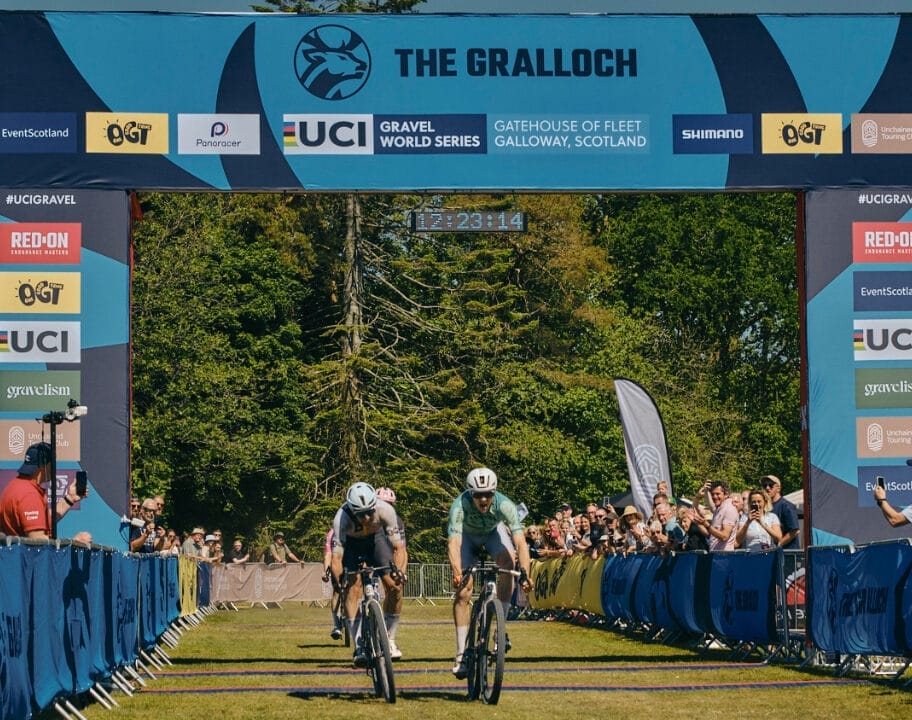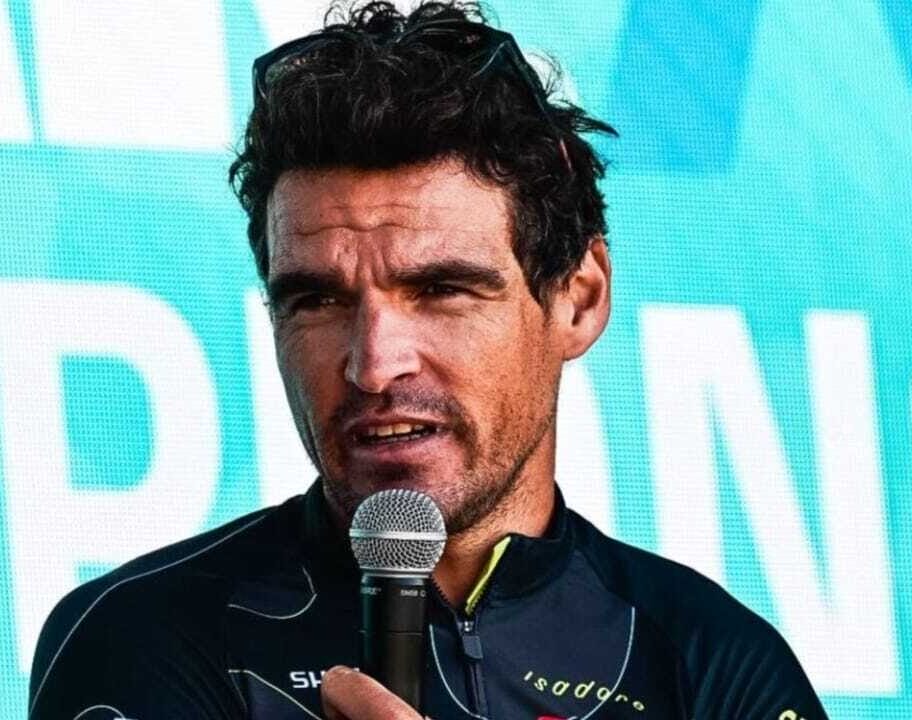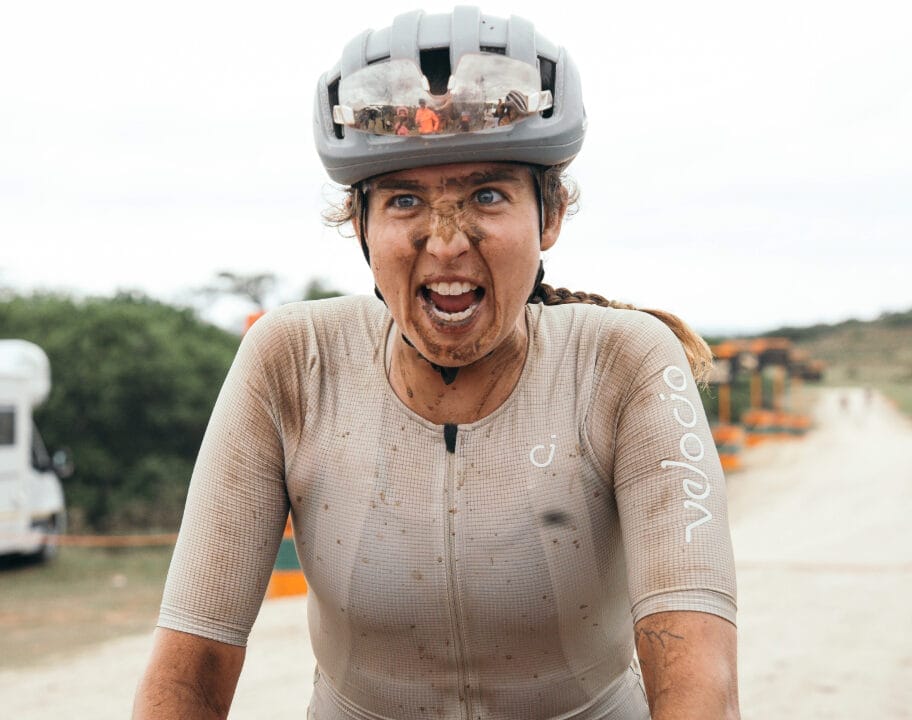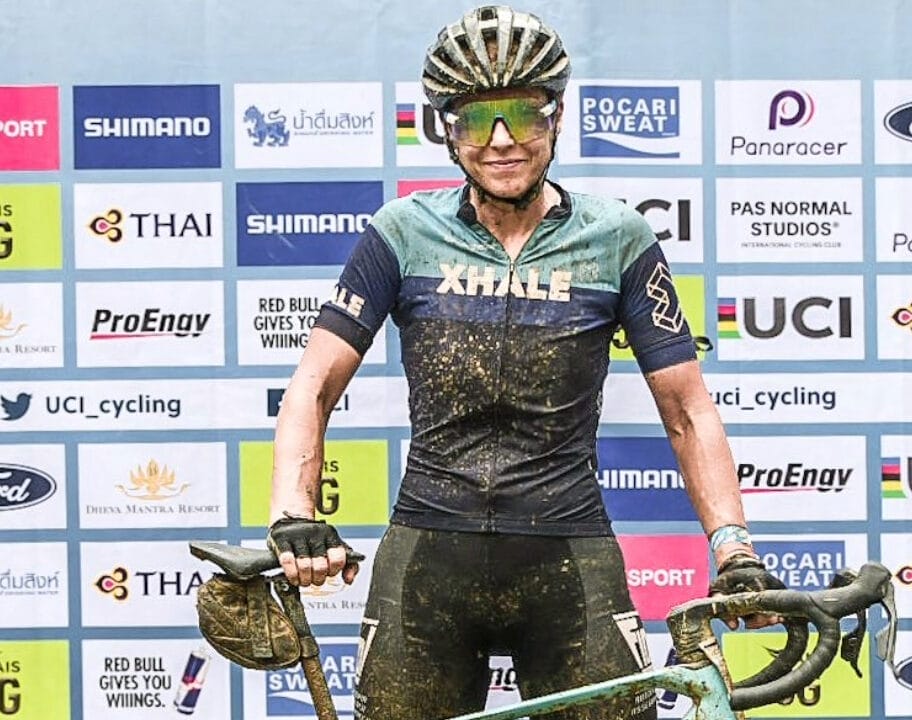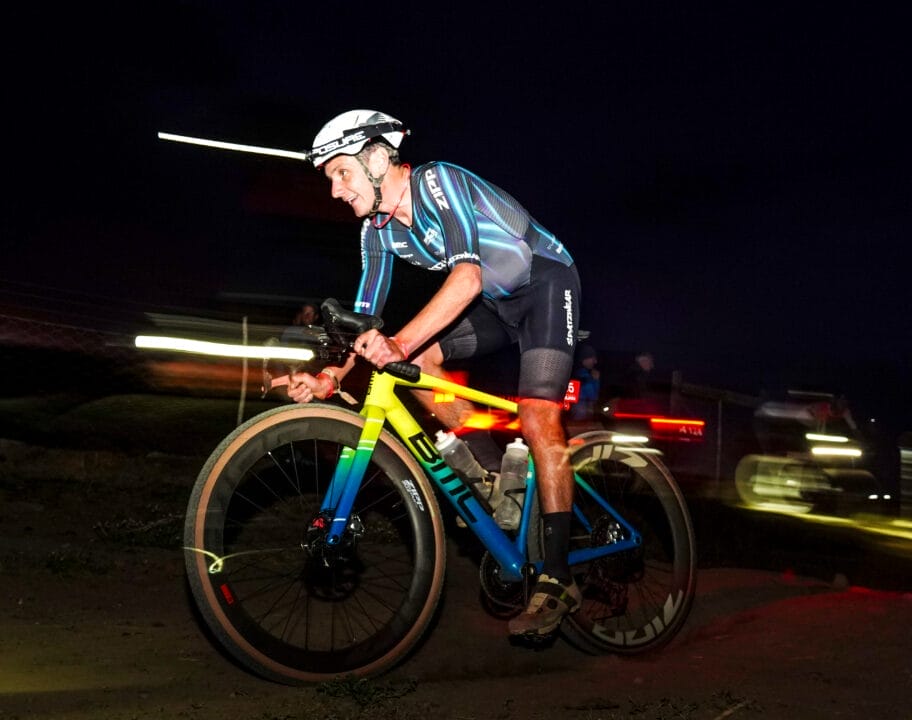You don’t need a wind tunnel or a PhD in marginal gains to know that bike choice matters, especially in a race as brutal as the Giro d’Italia. The first Grand Tour of the 2025 season, and by many accounts the most beautiful and punishing, is where tech, talent, and terrain collide in full force.
So, on a hot morning in Morbegno, a sleepy town not far from Lake Como, we skipped the start line theatrics and headed straight for the team buses. While fans crowded barriers and riders did their best to look unfazed, we were nose-deep in carbon, checking out the bikes that are being ridden by this year’s top contenders.
David Gaudu, Groupama – FDJ #71 (rider height 1.72m)

Bike: Wilier Filante SLR size S
Designed as an everyday aero bike, the Filante SLR is super lightweight without the extreme aero profiles of the Teammachine R or Madone SLR 9. It’s among the lightest in the WorldTour peloton. Gaudu opts for an integrated bar and stem but avoids the ultra-narrow setups increasingly common in the peloton.
Wheels and tyres – Miche Kleos RD 50 with Continental Grand Prix 5000 ST R (28mm)
With a 21 mm internal rim width, they sit well and offer a higher volume than the same width tires used on Storer’s DT Swiss ARC 1100 50mm wheels that are 1mm narrower. Ceramic hubs balance weight and aero for this semi-mountain stage. Aluminium Miche Light RD thru-axles round things out, keeping the weight down. For the gravel of the Siena stage, tyres were upsized to 30 mm.

Groupset – Full Shimano Dura Ace: 54x40T – 11×34 cassette, 165mm cranks
David changes to slightly lower gears on mountain stages, but considering that this year’s race so far hasn’t had any crazy, steep climbs, this has been his go-to gear ratio. What is interesting is his choice of 165mm cranks. With shorter crank lengths trending, it would be easy to see him potentially using 160mm cranks. This could be an area that he has yet to look into, but more likely we feel David has tried it and is yet to be convinced on the performance gains in relation to his riding style.
Bottle cages – Elite leggero carbon
Lighter than his teammates’ choices, though less aero compared to BMC and Trek setups. This could be an area for marginal gains for the FDJ rider.
Saddle – Prologo Nago Evo
An older version that looks as though it has been ridden for many years now and is not listed on Prologo’s website, suggesting Gaudu has a personal stock. The Nack carbon rails keep the weight down. Our conclusion is that it works for David, and he doesn’t want to change. As a major contact point with the bike, it’s testament to sticking with what works.
Bike computer – Garmin 850
Data remains central in professional racing, so knowing power output and other information during and after competitions is crucial.
The verdict
A combination of what works for David and what is fast, this setup feels like a bridge between bikes of a few years ago and a super modern, marginal gains-focused setup. A rider who hasn’t chosen super aggressive bars nor leaped onto 3D printed saddles and short cranks. you can learn a lot from this setup. As the saying goes ‘if it ain’t broke…’ should be the theme here. Given the countless hours riders spend in the saddle, once you find a setup that works, stick with it – and only chase trends once they’ve been proven to deliver a meaningful performance gain.
Mads Pedersen, Lidl Trek #116 ciclamino jersey holder (rider height 1.80m)

Bike – Madone SLR 8, size L | Cockpit: Madone one-piece handlebar with TT bar tape. 130mm length (-17 degree tilt), 37-40 flared width
Resplendent in the custom colourway to celebrate his sprinter’s jersey, this Trek is part of the company’s Project One custom build programme. An aero bike that looks fast on the stands outside of the team bus, the profiles of the Madone have now become iconic even outside the peloton. Of interest are the aggressive handlebars that Mads rides: narrow and with a significant tilt, they allow him to get into a wind-cheating, aerodynamic position and cut through a tightly packed peloton with ease.
Wheels and tires – Bontrager Aeolus RSL 51, Pirelli P ZERO™ RACE TLR RS tyres (28mm)
A 50mm rim profile is a common choice for semi-mountain stages, within the trio of bikes that we looked at, and this wheel setup sits at the junction of aerodynamics and low weight. Both the wheel and tyres are sponsor compliant, but we found out that riders switch profiles depending on the stage: deeper wind-cheating rims are on call for flat, fast stages; lighter setups with lower rims for the mountains. Notably, the Bontrager rims have the widest internal width of the three bikes we looked at – 23mm – giving the 28mm Pirellis extra volume. While this helps optimise airflow and reduce drag, it also allows Mads to run slightly lower pressures for added comfort, grip, and control, especially on wet days.
Note: UAE’s Del Toro, who’s been widely praised for his bike handling on both gravel and wet descents, rides Enve wheels with a 25mm internal width, which might help explain that confidence.

Groupset- SRAM 1x RED AXS 56T – 10X36 Cassette 172.5mm cranks
The only setup of the three in a 1x configuration, this caught our eye. Featuring a massive 56T chainring paired with 12-speed 10×36 cassette, this 1x setup gives him a consistent chainline for improved drivetrain efficiency and reduced weight. The mechanic told us that Pedersen goes to a 2x setup on mountain stages to get a wider gear range. Details like the K-Edge chain catcher imperative with a 1x setup), Time XPro 10 pedals and Tripeak Ceramic bearings for lower friction also add to his performance. Many parts were tweaked out in celebration of the ciclamino – we even noticed a rather cool coloured chain.
Bottle Cages – Trek RSL water bottle and cage
The devil is always in the detail when it comes to optimising aero bikes, and this setup fits to the modern day marginal gains mentality.
Saddle – Bontrager Verse Pro
Comfort comes first here, but with the hours Mads rides, we can’t agree more.
Bike computer – Wahoo ELEMNT BOLT
A compact data hub for this rider. We’d give a lot to deep dive into Mads’ numbers, we’re sure that they would make us soon realise our own levels.
The verdict
This is a fast bike for a big, powerful rider. Mads has taken some steps down the road to full optimisation with his narrow bars and much more modern wider rim width. 100% the most spectacular looking bike of the three, it turned some heads in the bus parking when we took it out to photograph it. And we can say that the proof is in the performance. A fast bike won’t turn a donkey into a racehorse, but it will support someone as strong as Mads to consistently accumulate sprint points.
Michael Storer, Tudor Pro Cycling Team #191 (rider height 1.74m)

Bike – BMC Teammachine R Mpc (Masterpiece), BMC ICS Aero cockpit
The high-end European-produced version of the iconic BMC Teammachine R saves grams off of the already featherweight stock model. With huge profiles and super wide forks, this bike screams fast. Michael has chosen a moderately aggressive one-piece handlebar from the BMC ICS offerings that go with the bike. We’re told he has spent a lot of time working on his bike fit to find a position that is fast, yet allows him to be comfortable and transfer as much power as possible to the pedals. For flatter stages, Michael rides the non-Masterpiece Teammachine R.
Wheels and tyres – DT Swiss ARC 1100 DICUT® DB 50mm, Schwalbe Pro One Tubeless 28mm
Michael was also riding around 50mm wheel profiles for this stage, although these wheels have the narrowest internal profile of the three bikes that we looked at, measuring 20mm meaning that the 28mm Schwalbe Pro One tyres looked smaller because of the reduced overall volume a narrower rim offers. We’re assured that the reason is on purpose and these wheels have been tested in combination with 28mm tyres to give the lowest drag possible over 45km/h at all yaw angles.
Groupset – Sram Red AXS 54X41 T – 10X36 cassette, 160mm cranks
Riding the sponsor-compliant flagship Red AXS, Michael is on a fairly standard gearing for the stage given his level and power output. We liked the details of the team branding on the AXS batteries. Of note, Michael was riding the shortest cranks of the three riders, even though he is not the shortest rider, so he has obviously embraced the latest thinking when it comes to setup.
Bottle Cage – BMC Aerocore bottle cages
Standard on top-tier BMC bikes, these cages reduce drag, with BMC claiming that it is faster with a bottle in the cage then not. They are used with standard bottles when compared to Mads’ bottle-and-cage combo.
Saddle – Prologo Norus Boost Evo 3D Carbonio Superflow
Another current trend with top level riders, this 3D-printed saddle gives Michael the comfort he needs for the long hours in the saddle, yet has the texture to stop him slipping on the saddle when in an aggressive position. We’re told that the airflow in the design also promotes comfort.
Bike Computer – Wahoo ELEMNT BOLT

Small, lightweight and data-rich, this computer allows on-ride data for Michael, whilst recording everything needed for the post performance debrief.
The verdict
This setup strikes a balance between speed, comfort, and power transfer – but with its hefty price tag, it’s one of the most exclusive on the road. It’s clear Michael has spent serious time with fitters and team partners to fine-tune a bike that’s fast without sacrificing ride quality and comfort.
Final thoughts
After geeking out over team bikes, the temptation to drag out our wallets and do something reckless with a credit card is strong. But as we sat at a bar in Morbegno, watching the Giro roll out beneath soft northern Italian skies, a few things became clear.
These riders? They train full-time, recover like it’s a profession (because it is), and chase marginal gains with all the support money can buy. For them, a 1% aero saving matters. A 0.5% improvement in rolling resistance can decide a Grand Tour stage.
For the rest of us, it’s not quite the same. Comfort matters more than wind tunnel numbers. A position that lets you ride longer, stronger, and without cursing your handlebars is the one to chase. Aero’s cool, but it’s not the shortcut to speed most brands want you to believe.
And so, a fast-looking bike does help – mostly because it makes you want to ride it. And that’s the point. It’s not about selling a kidney for the latest upgrade or bending yourself into a human paperclip for FTP gains.
Ride the bike. Enjoy the kit. And remember: the biggest performance upgrade most of us can make is still just riding more. Preferably with friends, some sun, and maybe a cold drink after.
